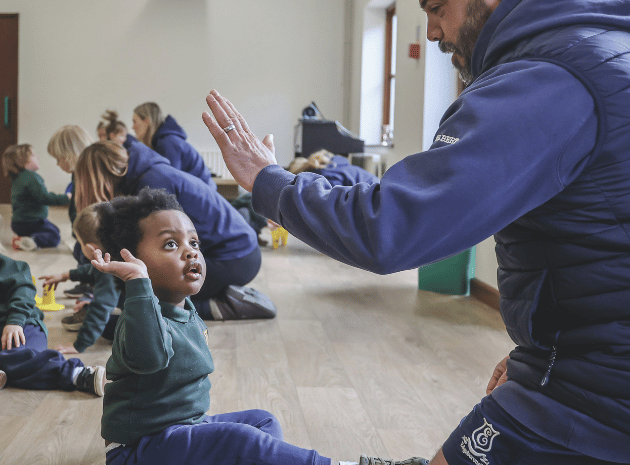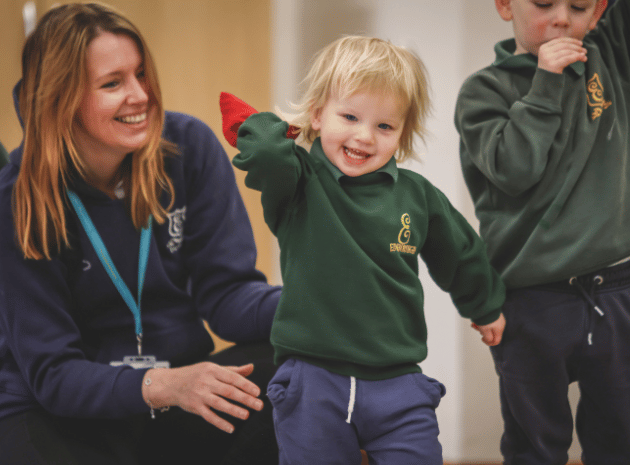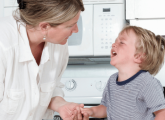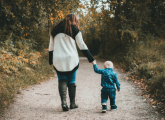Dr Jayne Symons explains why her award-winning team chose to put emotional regulation at the forefront of their practice…
Within early childhood education, it remains all too common to find provision focused heavily on a child’s phonetic knowledge or acquiring topic-related facts.
Achievement and success are invariably associated with what is produced. The pursuit of “education” over “development” fuels behaviour management systems driven by incentives and consequences that praise compliance. This overlooks the true needs of the child.
At Edgeborough, an independent prep school in Surrey, we chose a different path. Our early years team has spent the past year embedding an approach centred on emotional regulation.
This focus now touches every aspect of our practice – from our language use, to the design of our environment, and even our policies.
At its heart is a deep belief in the power of co-regulation and relationships to help children develop the capacity to self-regulate.
This change has been guided by neuroscience and shaped by professional development. Crucially, we’ve built it from within with a team who wanted to ensure they were meeting the needs of the children in our care as fully as possible.
At Edgeborough, we have always given emphasis to the relationships that we build with our children and families, before all else.
However, on reflection, this had not fully permeated into our wider provision, particularly the way that we were responding to emotionally charged behaviour.
We were often labelling dysregulation as challenging behaviour. Staff attention was directed towards the expressed behaviour, with subsequent actions aimed at stopping or fixing this (often with a misplaced reward or consequence).
Looking back, our knowledge of the brain was not sufficient to shift our focus beyond the child’s actions in that moment to the wider context and what the vulnerable young child was trying to communicate to us through their behaviour.
Access to training and new ideas acted as the catalyst for change. Our key staff received online training with the brilliant Dr Mine Conkbayir MBE. This ignited our interest and set us on a path of change.
We then reviewed our behaviour policy. We realised it was out of step with what we were beginning to understand about young children’s brains.
When children are dysregulated (when they shout, push, hide or shut down), this must be met with support and empathy from us, as it is a stress response.

Central to our work today is a grounding in neuroscience. We understand the child’s brain as a social organ, shaped by relationships.
Drawing on the work of Dr Dan Siegel and furthered by Dr Mine Conkbayir MBE, in simple terms, we view the brain through the metaphor of a house and as having:
When a child experiences stress – anything from a snatched toy to a loud noise – the connecting staircase between the upstairs and downstairs brain falls away (as in the child, it is not yet secure) and the two brains fail to work as one, with the downstairs, emotive brain dominating.
Another way to understand this is described by the term “flipping the lid”, with the upper rational, thinking brain disconnecting or flipping up from the more developed lower brain, making reasoning impossible.
Dr Dan Siegel’s hand model vividly illustrates this, showing that emotional regulation can only happen once the brain feels safe again.
So, instead of asking, “How do we stop this behaviour?” we began to ask, “What does this child need right now to feel safe and understood?”
Self-regulation doesn’t develop in isolation. Children learn to regulate because they have adults who co-regulate with them. We stay close, calm and emotionally present during moments of distress.
Our provision is created with self-regulation in mind, with quiet areas, sensory stations, and calm aesthetics. Daily routines are predictable, transitions are softened, and children are involved in decisions.
We also pay close attention to the five domains of stress described by Stuart Shanker and strive to reduce pressure across all five:
Moreover, staff speak openly about their own mood: “I’m feeling a bit tired today, I think I’ll do some exercise, will you join me?” so that children hear and see what emotional regulation looks like.
Underpinning this, our behaviour policy has become an emotional regulation policy. It underscores our belief that children’s behaviour is communication, and we need to respond with empathy first, before guiding reflection once the child is calm.
In making this step, we have built a robust culture of emotional regulation, grown from within, through discussion, agreement and time.
When big emotions do surface we follow a set of steps that draw from the progressive thinking of Stuart Shanker, Dr Mine Conkbayir MBE and Kate Silverton, which provides staff with a clear and compassionate process:
1. Name and validate the feeling and the evident emotion.
2. Offer reassurance to communicate that it’s okay to feel this emotion.
3. Reduce stressors through a hug, quiet space, or sensory support such as a weighted blanket.
4. Restore energy through exercise, time in nature and distraction.
5. Reflect together with the child (when they’re ready) about what happened, what could have happened, and what we’d look to do next time.
A year on, we can see significant changes. Our children speak with emotional awareness and empathy. They comment on one another’s feelings, offer support, and articulate what helps them feel better.
We’ve heard children say things like, “I feel fizzy, it’s too loud in here,” or “X is frustrated – I can help, I’ll play trains with them.”
These aren’t just sweet moments; they’re evidence of deep, developing emotional literacy.

We know our journey is not complete. We’re proud that we’ve received recognition through securing the EYFS Setting of the Year award at the 2025 Tes Schools Awards, but we know there is much more we can do.
We continue to offer CPD, review policies, and run workshops for families. We want every adult in our community (not just those in the EYFS) to understand more about how children’s brains work, and how emotional wellbeing underpins learning and metacognition across the curriculum.
Co-regulate before you educate – children need to feel safe before they can learn.
Name the emotion – help children recognise and label how they feel.
Create calm spaces – use sensory tools, quiet corners and predictable routines.
Model emotional language – talk aloud about your own feelings and how you manage them.
Reflect later, not in the moment – wait until a child is calm before discussing what happened.
Support staff – set aside time for professional development and professional reflection as a group and as individuals. Dr Mine Conkbayir’s Keep Your Cool Toolbox is a great resource.
Self-reflect – consider your own emotional standpoint; how are you looking after yourself to enable you to look after others?
Dr Jayne Symons is head of pre-prep at Edgeborough School.

Modelled behaviour – How to set the best example
Editors picks

Home visits – Is it time to rethink them?
Editors picks
